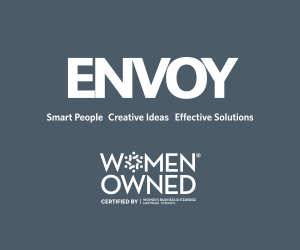Contributed by Teonne Wright, AAF Omaha Board Member & Education Committee Co-chair
In case you missed them, here are a few recent articles related to diversity in advertising.
“Multicultural TV’s Success Isn’t About Whites Getting Less, It’s About Everyone Getting More. Advertisers applaud the increase in diverse casting,” from AdWeek, published online March 27, 2015.
After the success of multicultural shows like Fox’s Empire, CW’s Jane the Virgin and ABC’s Fresh Off the Boat, Deadline reported this week that some white actors and their agents are feeling victimized by the TV industry’s growing interest in diverse casting.
But you know who doesn’t mind this trend? Advertisers.
Like most things in this world, TV exists to sell itself. And, with network shows featuring diverse casts among today’s biggest hits, it makes sense that brands are seeking to put their dollars behind multicultural shows.
“What we’re seeing is the audience is responding to the content being put forth that is inspired by a different lens, different stories and different perspectives,” said Esther “E.T.” Franklin, evp and head of Americas Experience Strategy for SMG Multicultural, part of the Starcom MediaVest Group. “It’s providing more nuanced stories, and the market is hungry.”
“Connecting through culture: African-Americans favor diverse advertising,” from Nielsen, published online October 20, 2014.
African-Americans—at 44 million strong and approximately 14.2% of the country’s population—make up a powerful group with a growing impact on American culture and business.
This demographic is largely young—53% are under the age of 35—giving them an oversized influence on the latest trends, especially with music and pop culture. In addition, higher academic achievement has translated into increases in household income—44% of all African-American households now earn $50,000 or more and 23% earn above $75,000. And these higher household incomes, coupled with overall population growth, are driving the substantial purchasing power of the African-American consumer, which is expected to reach $1.3 trillion in a few short years.
So how can businesses connect with these valuable shoppers? Know your consumers—culturally.
“Women in Business Q&A: Nancy Hill, President and CEO, 4As,” from Huffington Post, published online February 5, 2015.
Nancy Hill, as President and Chief Executive Officer of the 4A’s since 2008, has guided the association’s transformation to provide leadership, advocacy and guidance to the advertising community on issues such as patent trolling, online privacy and interest-based advertising, compensation and talent. She has personally led the 4A’s work on diversity including recruitment, talent development and media buying guidelines.
A veteran of agencies across the country, she began her career in advertising in 1983 at Doner/Baltimore, where she spent 10 years. This was followed by work at TBWA\Chiat\Day in both St. Louis and Los Angeles, before moving to San Francisco to lead Goldberg Moser O’Neill, which became Hill Holliday in 2001. After that, she joined BBDO where she was executive vice president and managing director for New York, overseeing several of the agency’s largest accounts. Her most recent position prior to joining the 4A’s was Chief Executive Officer of Lowe New York.
In April 2013, Nancy was recognized by AWNY (Advertising Women of New York) with itsChanging the Game Award. She was named one of Advertising Age’s 100 Most Influential Women in Advertising History and was honored as a Woman to Watch by Ad Age. Both the Arthritis Foundation and the Girl Scouts named her as a Woman of Distinction. She has served on the Board of Directors of the Miami Ad School and led the launch of its San Francisco campus.
Currently she serves on the Board of Directors of The Partnership at drugfree.org, The Ad Council, The National Advertising Review Council, TORCH, AdColor, The Digital Advertising Alliance and The Marcus Graham Project. She is also a Trustee of the University of Mount Union in Ohio and is an active member of the Board of People Helping People, an organization that builds schools and sponsors children for further education in Otavalo, Ecuador, where she has had a home for several years.
How has your life experience made you the leader you are today?
A few things in my background contribute to who I am and how I operate. First, I grew up in a very smalltown in Northwestern Pennsylvania. Population: 13,000. Population of the ENTIRE county: 45,000. The town is surrounded by forest. It was an idyllic place to grow up. You lie, you cheat, you steal? Everyone knows. Because of that, your sense of morality and integrity is a given, not something you have to learn. I had a boss early on who told me I’d never be successful in advertising because I was too honest. I’ve spent my career proving him wrong.
Second, I was a competitive swimmer all the way through college. Getting up for a 5:15 practice in the dead of winter forces you to be disciplined and focused. You never lose a sense of your competition; how close they are in the lane beside you, whether they are ahead or behind and, whether the pace you are setting is going to last the race. Advertising relies on these skills, and it has served me well.




